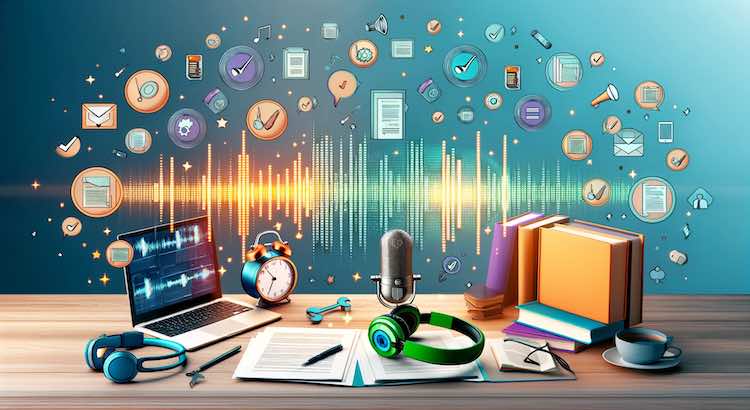How Transcription Services Help Save Time and Improve Accuracy in Academic Research
Academic research relies on gathering and analyzing large amounts of information quickly and accurately. Today, more students and researchers use transcription services to turn spoken words into text. These services make it easier to organize findings, check data, and work together. This article explores how transcription services save time, boost accuracy, and change the way research happens.
The Time-Saving Benefits of Transcription Services
Taking notes during interviews, lectures, and focus groups can slow down research. Manual transcription—typing audio or video recordings word by word—takes hours for every hour of audio. This slow pace can hold up projects and drain energy.
How Transcription Services Speed Up Research
- Fast Turnaround: Professional transcription services deliver complete transcripts in as little as 24 hours, compared to several days for manual typing (GoTranscript, 2023).
- Support for Large Projects: Services handle many hours of content in one order.
- Seamless Integration: Finished transcripts can be used with analysis tools and easily shared with team members.
- No Repetition Needed: Transcription allows researchers to focus on reviewing and drawing insights instead of replaying recordings.
Researchers can use their time more efficiently—analyzing findings, writing papers, or collaborating with others—when they don’t have to type out interviews word for word.
Flexible Options for Any Research Task
- Automated transcription delivers results in minutes for clear recordings.
- AI transcription subscriptions help teams working on recurring projects or large-scale studies.
- Custom options are available for challenging audio, multi-speaker files, or research with special formatting needs.
Accuracy: Protecting the Integrity of Academic Research
Spelling mistakes, missing sections, and incorrect speaker labels can damage research. Accuracy is critical to ensure reliable findings in both qualitative and quantitative analysis.
Transcription Services Improve Data Quality
- Skilled Transcribers: Professionals handle many accents, dialects, and technical terms often found in academic settings.
- Rigorous Quality Checks: Most services, like transcription proofreading options, verify transcripts for errors before delivery.
- Consistent Formatting: Standardized templates help keep transcripts neat and easy to analyze.
- Better Recall: Researchers reviewing accurate, verbatim transcripts have been shown to remember information more clearly (Allen & Berkowitz, 2021).
Transcription increases trust in the data, and helps researchers avoid mistakes that could affect their published results.
Making Research More Accessible and Usable
Text transcripts are not just about saving time and getting the words right. They also make research materials easier to use and share.
Key Ways Transcripts Support Accessibility
- Enabling Teamwork: Transcripts can be shared for group analysis or coding with qualitative research teams.
- Supporting Diversity: Written text helps team members who speak different first languages or have hearing impairments.
- Enhancing Searchability: Text files can be searched and referenced, speeding up review and comparison.
- Linking With Other Services: Projects often use text translation for global research, or subtitling services for interviews or documentaries.
- Including Everybody: Closed captions and accessible files make findings available to a wider group, meeting university and legal guidelines.
Transcription services help teams turn audio and video into high-quality, usable data for all project members.
Real Examples: Transcription Services at Work in Academia
1. Language and Cultural Studies
- A doctoral student recorded interviews with people from five different language backgrounds.
- Using audio translation and transcription, the student turned hours of conversations into accurate research material.
- The precise transcripts captured every detail and preserved cultural expressions, leading to published findings praised for authenticity (Case Study, GoTranscript, 2023).
2. Collaborative Science Projects
- An environmental research group used smartphones to record field team notes and meetings during a six-month study.
- Transcription services quickly provided organized, searchable transcripts of all team conversations and observations.
- Accurate text allowed fast coding of results, discovery of patterns, and easier sharing with international partners.
How Much Do Transcription Services Cost?
- Prices have become more affordable in the last five years (GoTranscript, 2023).
- See current transcription pricing and captioning rates for academic budgets.
- Many services offer discounts for large projects and ongoing research needs.
Ordering and Customizing Transcription Services
- You can order transcription for interviews, lectures, or conference meetings in a few clicks.
- Special projects can request translation, closed captions, or captions for video to help with publishing or presentations.
- If you need accurate text for grants or publications, add proofreading services.
Conclusion: Transcription Services Are Essential for Academic Research
Transcription services save researchers time and ensure accuracy at each stage of academic work. They help teams quickly turn speech into clear, organized text for analysis and sharing. Transcripts also support accessibility for people with different needs, helping meet institutional and legal standards. For those seeking affordable, high-quality, and customizable solutions, GoTranscript offers a full range of transcription and related services perfect for academic needs.



















 Verified Order
Verified Order